What You Need To Know About Maltodextrin – The Sneaky Ingredient and 5 Reasons Why It Is More Dangerous Than Sugar
The Dangers of Maltodextrin and Why It Should Be Avoided
Overview
Maltodextrin is a common food additive derived from starches like corn, wheat, rice, or potatoes. It is typically used as a thickener, filler, or sweetener in
processed foods, sports drinks, and various dietary supplements. Although it is widely used and generally regarded as safe by the U.S. Food and Drug Administration (FDA), growing concerns highlight its potential dangers and why it might be beneficial to limit or avoid maltodextrin in your diet.
What is Maltodextrin?
Maltodextrin is a white, starchy powder that undergoes hydrolysis, a process where enzymes break down the starches into smaller glucose chains. The result is a substance that is quickly absorbed by the body, providing a rapid spike in blood sugar. This hydrolyzed starch is nearly tasteless, making it an attractive additive in foods that need texture or volume without adding flavor. However, while it serves practical purposes in food production, it has a number of health risks that make it worth avoiding.
Why Should You Avoid Maltodextrin?
Blood Sugar Spikes and Increased Risk of Diabetes Maltodextrin has a high glycemic index (GI), meaning it causes a rapid rise in blood sugar levels when consumed. With a GI score ranging from 85 to 136, it is even higher than table sugar (sucrose), which has a GI of around 65. This rapid spike in blood sugar can lead to insulin resistance over time, increasing the risk of developing type 2 diabetes.
For those already dealing with blood sugar regulation issues, such as people with diabetes or pre-diabetes, consuming maltodextrin can exacerbate their condition. Its ability to spike blood glucose levels quickly makes it dangerous for anyone trying to maintain stable blood sugar levels.
Promotes Weight Gain and Obesity This hydrolyzed starch additive is often used in processed foods, which are typically calorie-dense but nutrient-poor. Consuming large amounts of such foods, especially those high in simple carbohydrates like maltodextrin, can lead to overeating, as they do not promote feelings of fullness the same way that complex, fiber-rich carbohydrates do. As a result, regular consumption of maltodextrin-containing products can contribute to weight gain and even obesity.
Furthermore, foods with maltodextrin are often designed to be hyper-palatable, meaning they are engineered to taste extremely good, which encourages overconsumption. Weight gain over time can increase the risk of metabolic syndrome, heart disease, and other chronic conditions.
Disrupts Gut Health and Promotes Inflammation Maltodextrin may have negative effects on gut health, particularly in its influence on gut bacteria. Studies have shown that this hydrolyzed starch can alter the gut microbiota, favoring the growth of harmful bacteria like Escherichia coli (E. coli) over beneficial bacteria like Lactobacillus. An imbalance in gut flora, known as dysbiosis, has been linked to inflammation, autoimmune diseases, and digestive problems such as irritable bowel syndrome (IBS).
Additionally, maltodextrin has been shown to promote bacterial adhesion to the gut lining, which may worsen conditions like inflammatory bowel disease (IBD). Research suggests that this hydrolyzed starch may enhance the survival and growth of pathogens that contribute to chronic gut inflammation, ultimately weakening gut integrity and immune function.
Potential Allergies and Intolerances While maltodextrin itself is not a common allergen, it is often made from genetically modified (GMO) corn or wheat, which can cause concerns for people with sensitivities to GMOs or gluten. Individuals with celiac disease or non-celiac gluten sensitivity may unknowingly consume this hydrolyzed starch that contains traces of gluten, triggering adverse reactions.
In addition, this hydrolyzed starch additive is sometimes linked to food intolerances that result in bloating, gas, and digestive discomfort, especially in people who already have sensitivities to corn, wheat, or other grains. The process of breaking down the starches used to make this additive may not fully eliminate allergens, leading to potential digestive disturbances.
Supports the Growth of Harmful Bacteria Maltodextrin, especially when used in processed foods, has been found to aid the growth of harmful bacteria like Clostridium difficile (C. diff), which is linked to infections in the gut that cause diarrhea, inflammation, and even life-threatening conditions. Research indicates that C. diff can thrive in environments with high levels of maltodextrin, leading to an increased risk of infection for individuals exposed to contaminated food sources or suffering from weakened immune systems.
Diseases Maltodextrin May Cause
Maltodextrin, a highly processed carbohydrate additive, has been linked to various health conditions due to its effects on blood sugar levels, gut health, immune system, and metabolism. Here are the main health conditions that can arise from regular consumption of this hydrolyzed starch additive, along with scientific references to support each point:
- Type 2 Diabetes and Insulin Resistance
Maltodextrin has an extremely high glycemic index (GI), causing rapid spikes in blood sugar levels after consumption. Frequent blood sugar spikes can overwork the pancreas, leading to insulin resistance and, over time, the development of type 2 diabetes. For individuals already dealing with prediabetes or diabetes, maltodextrin can further destabilize blood sugar control, increasing the risk of complications.
- Obesity and Weight Gain
Since this hydrolyzed starch is commonly found in processed foods, it contributes to excessive calorie intake without providing essential nutrients. It promotes rapid energy spikes followed by crashes, which can trigger overeating and cravings for more high-calorie foods. Long-term consumption of maltodextrin-containing foods has been associated with obesity due to its role in blood sugar dysregulation and promotion of fat storage.
- Gut Dysbiosis and Digestive Issues
Maltodextrin has been shown to disrupt the balance of gut bacteria, specifically promoting the growth of harmful bacteria like Escherichia coli (E. coli) at the expense of beneficial bacteria like Lactobacillus. This imbalance, known as dysbiosis, has been linked to digestive issues such as bloating, gas, diarrhea, and irritable bowel syndrome (IBS). Additionally, dysbiosis can exacerbate conditions like inflammatory bowel disease (IBD).
- Inflammatory Bowel Disease (IBD)
Studies suggest that maltodextrin may exacerbate or even contribute to the development of inflammatory bowel diseases like Crohn’s disease and ulcerative
- Immune System Suppression
Maltodextrin has been linked to the suppression of immune system function by disrupting the gut microbiome and promoting the growth of harmful bacteria. Research suggests that this hydrolyzed starch encourages pathogenic bacteria like Clostridium difficile (C. diff), which can lead to severe gut infections and immune system weakening. The immune system and gut microbiome are closely connected, and dysbiosis (an imbalanced gut flora) can impair the body’s ability to fight off infections.
- Allergic Reactions and Food Sensitivities
Although this hydrolyzed starch is generally considered safe, it can cause allergic reactions or food intolerances, especially in people with sensitivities to corn, wheat, or gluten. Since maltodextrin is often derived from these ingredients, those with celiac disease, gluten sensitivity, or corn allergies may experience symptoms such as bloating, digestive distress, or skin rashes after consuming foods with this additive.
- Increased Risk of Infections
Maltodextrin may increase the risk of infections in the gut, especially by promoting the growth of harmful bacteria like C. diff. This pathogen is responsible for severe diarrhea and inflammation in the colon, and infections can be life-threatening, especially in people with compromised immune systems. By disrupting the gut barrier and promoting the growth of pathogenic bacteria, maltodextrin weakens the body’s natural defenses against harmful microbes.
Maltodextrin is associated with numerous health conditions, ranging from diabetes and obesity to gut dysbiosis and increased risk of infections. Its effects on blood sugar, gut health, and immune function make it a potentially harmful additive for many individuals, particularly those with pre-existing health conditions like diabetes or inflammatory bowel disease. Limiting your intake of maltodextrin by avoiding processed foods and opting for whole, natural alternatives is a crucial step in maintaining better overall health.
Glycemic Index of Maltodextrin Compared to Other Sugars and Carbohydrates
Maltodextrin has one of the highest glycemic index (GI) values among sugars and carbohydrates, meaning it causes a rapid spike in blood glucose levels after consumption. The glycemic index is a numerical scale (0–100) that ranks carbohydrates based on how quickly and how much they raise blood sugar levels. Foods with a high GI are absorbed quickly, while those with a lower GI provide a slower, more sustained energy release.
- Maltodextrin:
- Glycemic Index: 85–136
Maltodextrin has a GI that can range from 85 to 105, depending on its source and processing. This extremely high GI makes maltodextrin rapidly digestible, causing a sharp spike in blood glucose and insulin levels.
- Glycemic Index: 85–136
- Glucose (Dextrose):
- Glycemic Index: 100
Glucose serves as the baseline for the glycemic index and has a maximum value of 100. This means that maltodextrin can raise blood sugar levels as quickly, or even faster, than pure glucose.
- Glycemic Index: 100
- Sucrose (Table Sugar):
- Glycemic Index: 65
Sucrose, which is a disaccharide made of glucose and fructose, has a much lower GI than maltodextrin. This means it raises blood sugar levels more slowly compared to maltodextrin.
- Glycemic Index: 65
- Fructose:
- Glycemic Index: 15–25
Fructose, a sugar found naturally in fruits, has a very low GI compared to maltodextrin. It has minimal impact on blood sugar levels because it is metabolized in the liver rather than causing a direct rise in blood glucose.
- Glycemic Index: 15–25
- Lactose (Milk Sugar):
- Glycemic Index: 45
Lactose, found in milk and dairy products, has a moderate GI compared to maltodextrin. It is broken down more slowly due to its composition as a disaccharide of glucose and galactose.
- Glycemic Index: 45
- White Bread:
- Glycemic Index: 70–75
White bread, made from refined flour, is often used as a reference for high-GI foods. Its GI is significantly lower than that of maltodextrin, but it is still considered high due to the quick breakdown of its starches.
- Glycemic Index: 70–75
- Brown Rice:
- Glycemic Index: 50–55
Brown rice has a lower GI compared to maltodextrin because it contains fiber and complex carbohydrates that slow down digestion and sugar absorption.
- Glycemic Index: 50–55
8. Oatmeal:
-
- Glycemic Index: 55
Oatmeal, a source of complex carbohydrates, has a relatively low GI compared to maltodextrin. The fiber content in oatmeal slows the absorption of glucose into the bloodstream.
- Glycemic Index: 55
Why the High Glycemic Index is Concerning
The extremely high GI of maltodextrin means it causes sharp spikes in blood sugar levels, followed by rapid drops, leading to the following potential issues:
- Insulin Resistance: Repeated blood sugar spikes can lead to insulin resistance, increasing the risk of developing type 2 diabetes.
- Weight Gain: High-GI foods are digested quickly, leading to frequent hunger and overeating, which can contribute to obesity.
- Energy Crashes: After the initial spike in energy, blood sugar drops rapidly, leading to fatigue and cravings for more high-GI foods.
Maltodextrin’s glycemic index, which can exceed that of glucose (the standard for GI at 100), places it among the highest-ranking carbohydrates in terms of its impact on blood sugar. For individuals aiming to maintain stable blood sugar levels or reduce the risk of insulin resistance and weight gain, it is crucial to avoid or limit this additive in their diet.
Hidden Sources of Maltodextrin
Maltodextrin is prevalent in many foods, often hidden under various labels. Most processed foods have this ingredient. Common foods that contain this hydrolyzed starch additive include:
- Sports drinks and supplements: Used to provide quick energy.
- Salad dressings and sauces: Used as a thickener.
- Baked goods: Used to improve texture and shelf-life.
- Sugar-free products: Used as a bulking agent.
- Processed snacks: Added for flavor and preservation.
Even products that are marketed as “healthy” may contain maltodextrin, making it essential to read ingredient labels carefully.
Natural Alternatives
If you are looking to avoid maltodextrin, several natural alternatives offer similar benefits without the health risks:
- Stevia: A natural sweetener with a low glycemic index, making it a good alternative for those concerned about blood sugar levels.
- Coconut Sugar: A natural sweetener with a lower glycemic index than maltodextrin.
- Raw Organic Honey: A natural sweetener that is safer and healthier than maltodextrin. Raw and glyphosate varieties are best.
After Thoughts
While maltodextrin may serve a functional purpose in food manufacturing, its potential health risks—ranging from spiking blood sugar levels and promoting weight gain to disrupting gut health and increasing the risk of infections—make it worth reconsidering in your diet. The modern diet is already overloaded with processed foods, and maltodextrin is one more ingredient contributing to the health issues many people face today. By avoiding foods that contain maltodextrin and opting for natural, whole-food alternatives, you can protect your health and support better digestion, weight management, and blood sugar control.
Make you avoid Maltodextrin today and consider adding Solaris from Activation Products into your daily health regimen to help start enjoying its health benefits and experience revitalized optimal health.
For natural and healing remedies, products, and supplements to help you live your most optimal healthy life, visit our store here!
Remember: Own Your Health!
If you enjoyed the information presented in this article, Please Share It. Help us reach more people and keep this website going! Thank you!
Note: The information provided in this article is for educational purposes only and should not be considered medical advice. Please consult with a healthcare professional or registered dietitian before making any significant changes to your diet or lifestyle.
Frequently Asked Questions
- What is Maltodextrin?
It is a white, powdery carbohydrate that is commonly used as a food additive. It is derived from starches such as corn, rice, potato, or wheat. It is often used as a thickener, filler, or to improve the texture of processed foods.
- Is Maltodextrin a Sugar?
While maltodextrin is not technically a sugar, it behaves like one in the body due to its rapid conversion into glucose. It has a high glycemic index and causes blood sugar levels to spike quickly, much like simple sugars.
- What Foods Contain Maltodextrin?
It is found in a wide variety of processed foods, including:
- Snacks (chips, crackers)
- Sweets and candies
- Salad dressings and sauces
- Instant foods (potatoes, soups, and puddings)
- Sports drinks and protein powders
- Sugar substitutes like Splenda
- Baked goods
- What is the Glycemic Index (GI) of Maltodextrin?
This hydrolyzed starch has a glycemic index ranging from 85 to 105, depending on how it’s processed. This is higher than glucose (GI of 100) and most other carbohydrates, making it a significant cause of blood sugar spikes.
- Is Maltodextrin Safe for People with Diabetes?
People with diabetes or those at risk of developing diabetes should avoid maltodextrin due to its high glycemic index. It can cause rapid spikes in blood sugar, which makes managing glucose levels more difficult for individuals with insulin resistance or diabetes.
- Does Maltodextrin Affect Gut Health?
Yes, it has been shown to negatively affect gut health. It can promote the growth of harmful bacteria such as Escherichia coli (E. coli), leading to an imbalance in the gut microbiome (dysbiosis). This may increase the risk of digestive issues like irritable bowel syndrome (IBS) and inflammatory bowel diseases (IBD), such as Crohn’s disease.
- Can Maltodextrin Cause Weight Gain?
Yes, this hydrolyzed starch can contribute to weight gain. As a high-GI carbohydrate, it is digested quickly, leading to spikes and crashes in blood sugar levels. This can promote overeating and fat storage, especially if consumed frequently in processed foods.
- Is Maltodextrin Safe for Gluten-Intolerant Individuals?
It depends on the source. It can be derived from wheat, but even wheat-derived maltodextrin is usually processed in a way that removes the gluten. However, people with severe gluten intolerance or celiac disease should exercise caution and check food labels to ensure the source is gluten-free.
- Does Maltodextrin Cause Allergic Reactions?
While rare, some individuals may experience allergic reactions to this additive, especially if they have sensitivities to the source from which it was derived (e.g., corn or wheat). Symptoms may include digestive upset, bloating, or skin reactions.
- Is Maltodextrin Used in Sports Nutrition?
Yes, it is often used in sports drinks and energy gels because it provides a quick source of energy. Athletes may use it to replenish glycogen stores during endurance events. However, its high glycemic index makes it unsuitable for regular consumption outside of intense physical activity.
- Is Maltodextrin the Same as Dextrin?
No, maltodextrin and dextrin are different. While both are derived from starch, maltodextrin has a much higher glycemic index and is digested faster. Dextrin, on the other hand, is a more complex carbohydrate that takes longer to break down, providing more sustained energy release.
- Can Maltodextrin Be Used as a Sugar Substitute?
It is sometimes used in sugar substitutes like Splenda, but it is not calorie-free and can affect blood sugar. While it is often mixed with artificial sweeteners in these products, this hydrolyzed starch itself has nearly the same number of calories as sugar.
- Is Maltodextrin Safe?
This hydrolyzed starch additive is classified as “generally recognized as safe” (GRAS) by the U.S. Food and Drug Administration (FDA). However, regular consumption may lead to negative health effects, particularly for those with diabetes, gut health issues, or weight concerns.
- What are Healthier Alternatives to Maltodextrin?
Healthier alternatives to this additive include:
- Stevia: A natural, zero-calorie sweetener that does not raise blood sugar.
- Monk Fruit Extract: A natural sweetener with no calories and minimal impact on blood sugar.
- Inulin: A prebiotic fiber that can improve gut health while acting as a sugar substitute.
- Coconut Sugar: A lower GI alternative to traditional sugars.
- Honey: A natural sweetener with additional antioxidant benefits, though it still raises blood sugar.
- How Can I Avoid Maltodextrin?
To avoid this hydrolyzed starch addtive, it’s important to:
- Read ingredient labels on processed foods carefully.
- Choose whole, unprocessed foods.
- Avoid products that list the additive as an ingredient, especially in snacks, sauces, and packaged drinks.
- Look for natural alternatives when choosing sweeteners and thickening agents.
References
- Harvard Medical School. (n.d.). Glycemic index and glycemic load for 100+ foods. Harvard Health Publishing
- Kim, J. Y., et al. (2015). Impact of High-Glycemic Load Diet on the Risk of Type 2 Diabetes Mellitus. Journal of Nutrition, 145(3), 503-510.
- Monteiro, C. A., et al. (2013). Ultra-processed products are becoming dominant in the global food system. Public Health Nutrition, 16(12), 2262-2270.
- Nickerson, K. P., & McDonald, C. (2012). Crohn’s disease-associated adherent-invasive Escherichia coli adhesion is enhanced by exposure to maltodextrin. Applied and Environmental Microbiology, 78(14), 4976-4984.
- Steed, A. L., et al. (2017). Maltodextrin Promotes Gut Dysbiosis, Enhancing Susceptibility to Enteric Infection. Cell Host & Microbe, 21(2), 258-270.
- Fasano, A. (2011). Celiac disease: How to handle gluten sensitivity. Gastroenterology & Hepatology, 7(10), 702-707.
- Ludwig, D. S. (2002). The glycemic index: physiological mechanisms relating to obesity, diabetes, and cardiovascular disease. JAMA, 287(18), 2414-2423.
- Reichardt, N., et al. (2018). Impact of maltodextrin and other carbohydrates on gut microbiota in a mouse model. Frontiers in Microbiology, 9, 1733.
- Livesey, G., & Tagami, H. (2009). Intervention studies on the effects of low-digestible carbohydrates on human health. European Journal of Nutrition, 48(2), 81-100.
- Foster-Powell, K., Holt, S. H., & Brand-Miller, J. C. (2002). International table of glycemic index and glycemic load values: 2002. American Journal of Clinical Nutrition, 76(1), 5-56.
- Brand-Miller, J., et al. (2003). The New Glucose Revolution: The Authoritative Guide to the Glycemic Index—the Dietary Solution for Permanent Weight Loss.


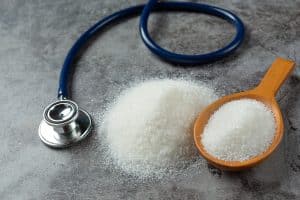

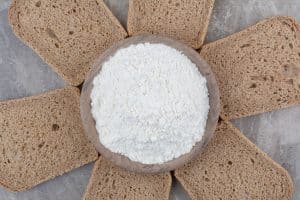




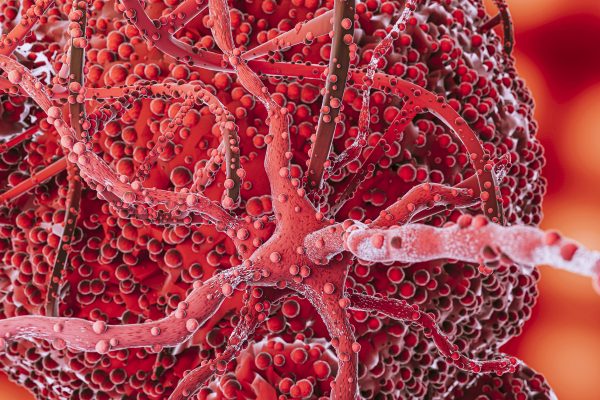

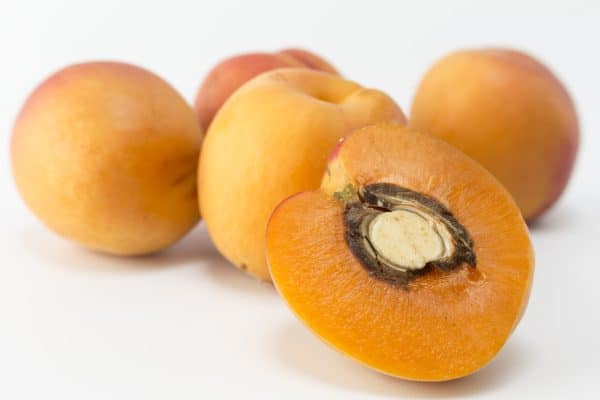


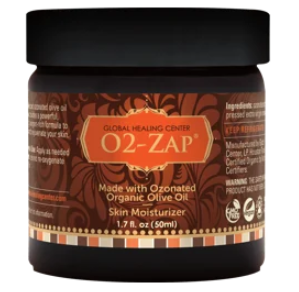















0 Comment